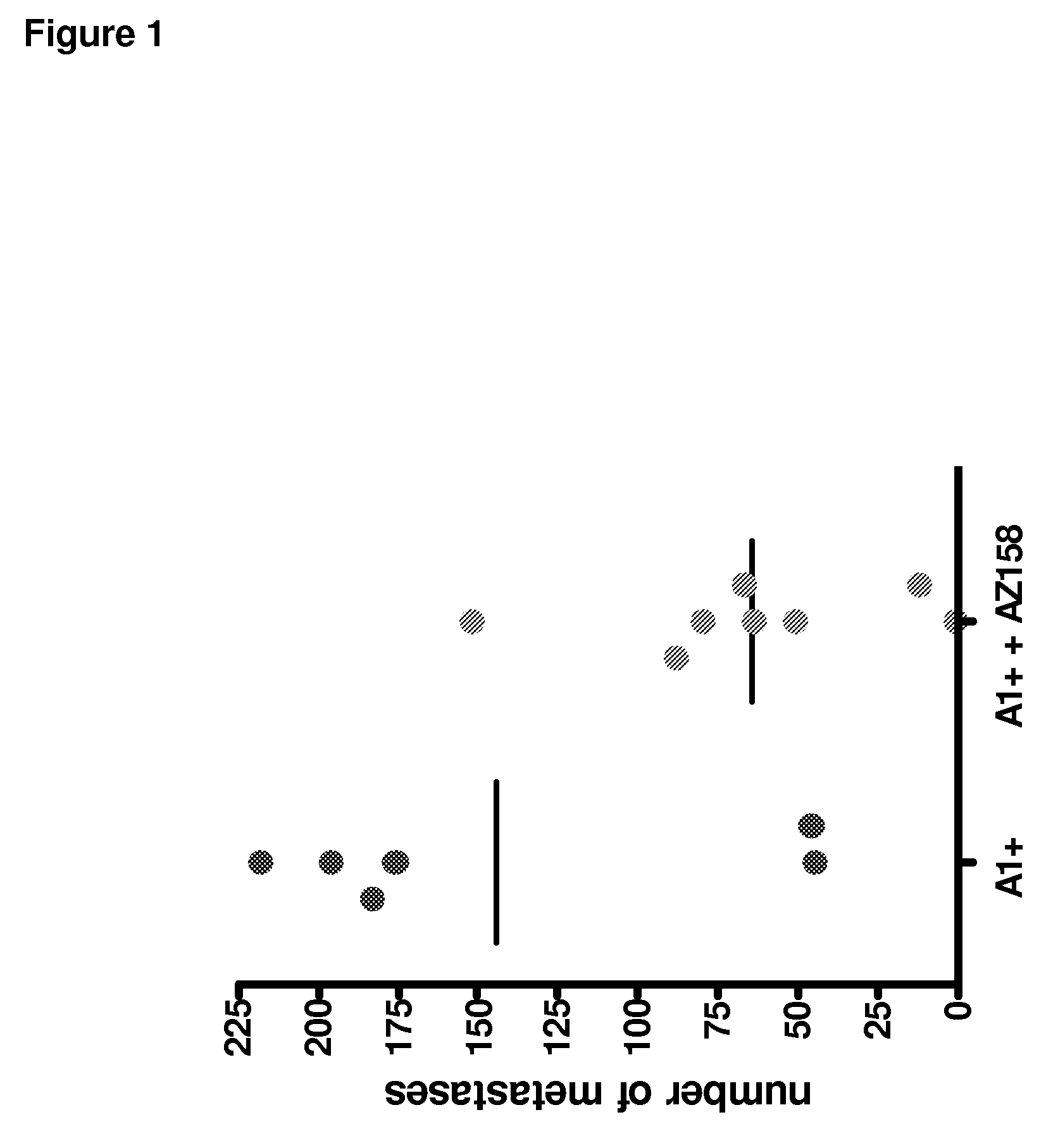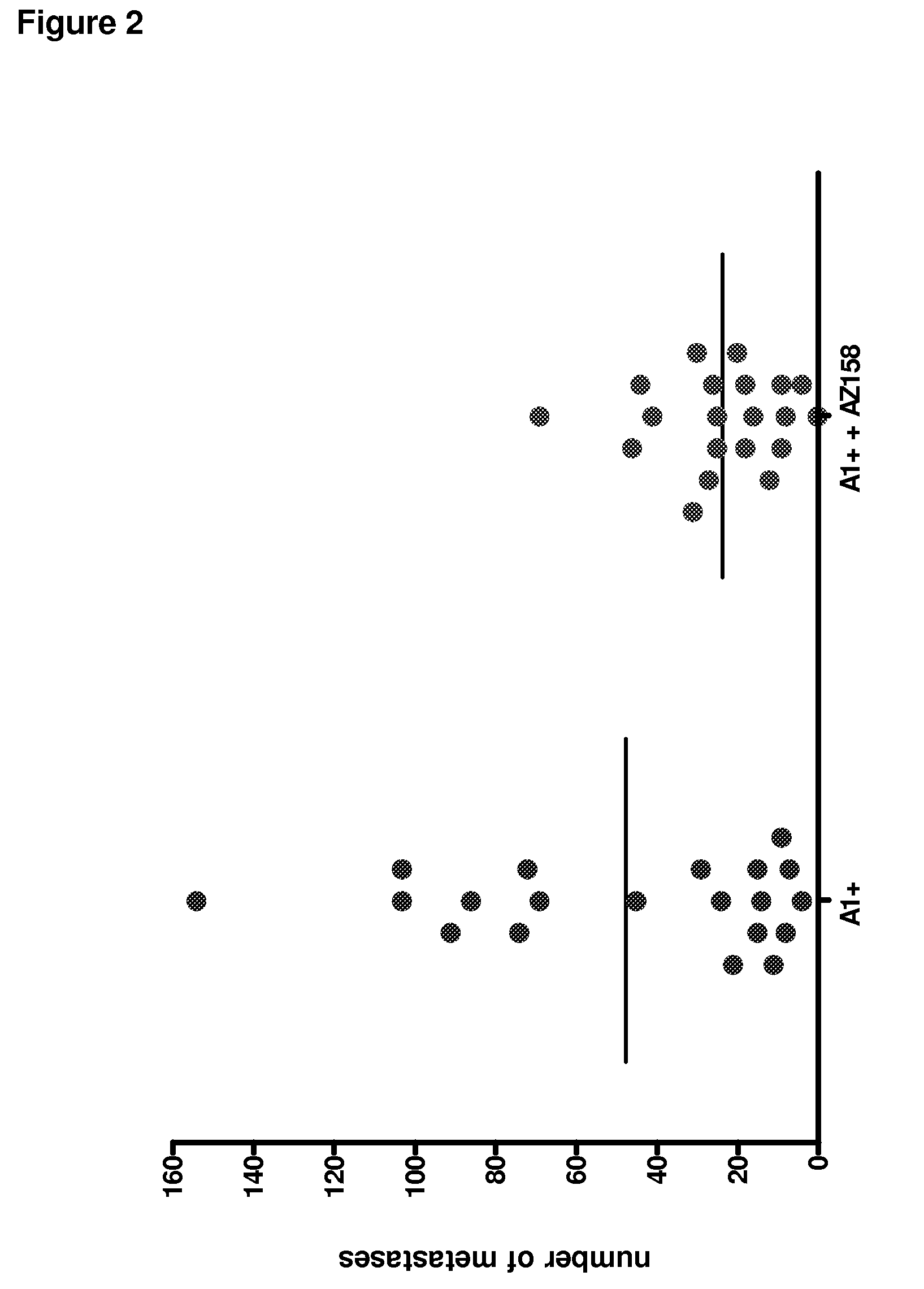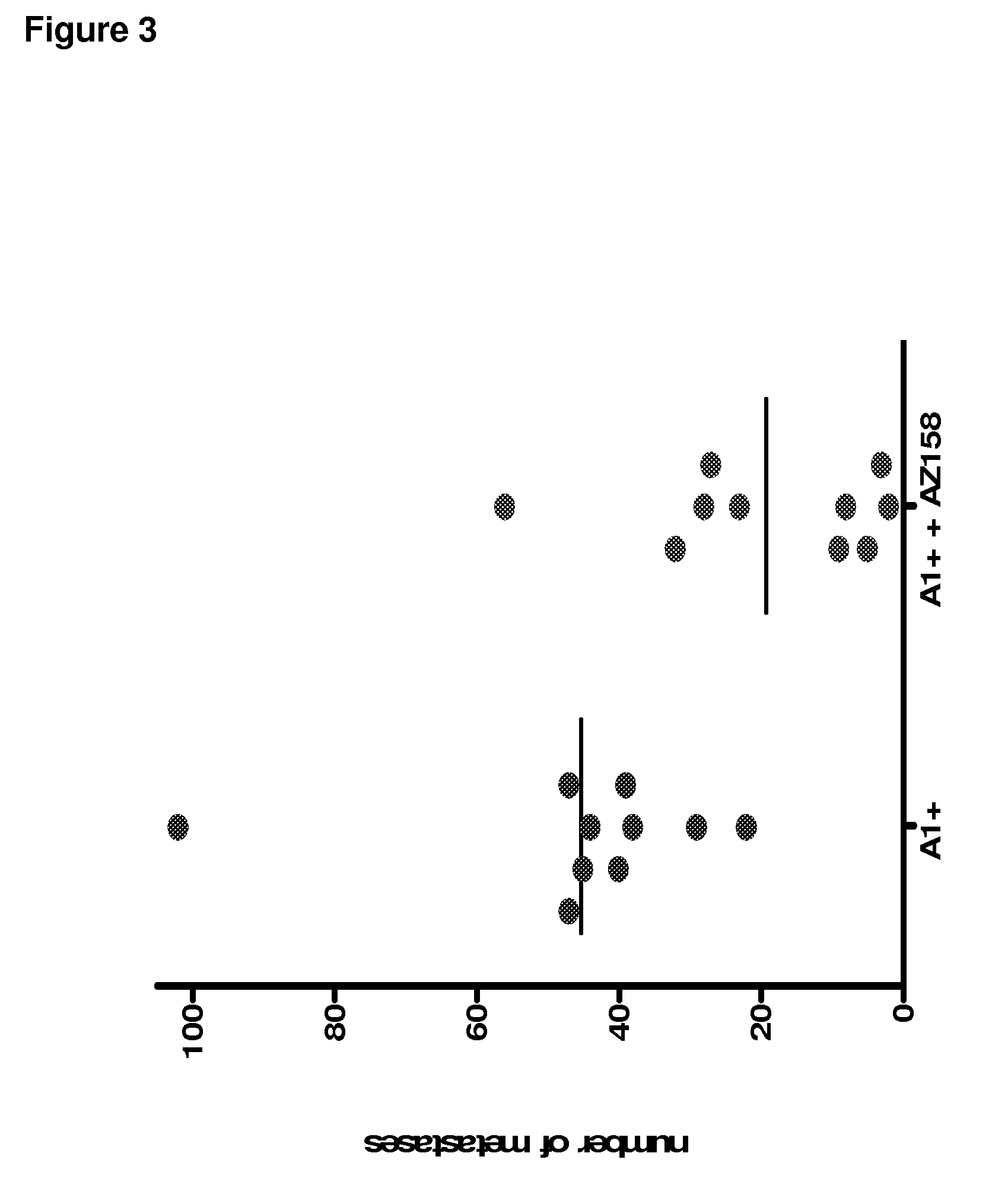Anti-KIR3D antibodies
a technology of anti-kir3d and antibodies, which is applied in the field of anti-kir3d antibodies, can solve the problems of not being able to block kir-ligands, inhibit binding, etc., and achieve the effect of slowing down the proliferation of kir3dl2-expressing cells and improving the ability to mediate adcc toward kir3dl2-expressing cells
- Summary
- Abstract
- Description
- Claims
- Application Information
AI Technical Summary
Benefits of technology
Problems solved by technology
Method used
Image
Examples
example 1
Generation of AZ158
[0219]mAbs were generated by immunizing 5 week old Balb C mice with polyclonal IL-2 activated NK population. After different cell fusions, the mAb AZ158 was initially selected for binding subset of NK cells population in different donors and two colour immunofluorescence analysis of polyclonal NK-cell populations indicated that AZ158 mAb reacts with the same cell subset stained by Z27 (anti KIR3DL1 / S1) and Q66 (anti-KIR3DL2, IgM, generated in the inventors' laboratory) mAbs. The reactivity of AZ158 was further analyzed on NK cell populations and clones in combination with additional antibodies, including EB6 (anti-p58.2.p50.2, CD158a), GL183 (anti-p58.2 / 50.2, CD158b), PAX180 (anti-p50.3) and FES172 (anti-p50.3), as well as Z27 and Q66, and it was observed that AZ158 reacted with the same cell subset stained by the anti-KIR3DL1 and anti-KIR3DL2 mAbs. Similar results were also observed using a panel of NK cell clones expressing different HLA class I specific NK rec...
example 2
Binding to KIR3D Receptors
A. Binding to KIR3DS1 on PBMC
[0220]Binding of antibody AZ158 to human NK cells was assessed. PBMC (thawed and gated for CD3−CD56+ NK lymphocytes) were incubated with mAbs, washed and labeled with PE-GaM, SAV-PE or GAM-IgG M. Flow cytometry was carried out on a XL / MCL cytometer (Beckman Coulter). Acquisition and analysis are performed with EXPO™ 32 v1.2 software (Beckman Coulter). Antibodies used were AZ158, and Z27-PE (specific for KIR3DL1 and KIR3DS1), DX9-PE (specific for KIR3DL1 only) and Q66 (IgM specific for KIR3DL2 only), both previously generated in the inventors' laboratory). Including DX9 in addition to Z27 and Q66 permits the contribution of KIR3DS1 to the binding profile to be assessed. Staining patterns indicated that slightly more than half of NK cell population was stained by including AZ158. Based on staining patterns, antibody AZ158 appeared to stain each of the subsets of NK cells stained by antibodies Z27, Q66 and DX9 indicating that AZ158...
example 3
Chimerization of AZ158 Heavy and Light Chain Variable Regions
[0239]Frozen cell pellets of mouse hybridoma line, AZ158, were thawed and processed using the RNeasy Midi Kit (Qiagen cat. No. 75142) to isolate total RNA. About 5 micrograms of AZ158 RNA was subjected to reverse transcription to produce AZ158 cDNA using the Amersham Biosciences 1st strand synthesis kit (Amersham Biosciences, Cat. No. 27-9261-01). Immunoglobulin heavy chain variable region (VH) cDNA was amplified by PCR using 12 different IgH primers in combination with a constant region primer in order to determine which primer pair was the most suitable for PCR. Similarly, immunoglobulin kappa chain variable region (VK) was amplified using multiple IgK primers in combination with a kappa constant region primer.
[0240]Only a single set of primers gave an amplification product for the heavy chain variable regions. The amplification products were ligated separately into pCR2.1®-TOPO Vectors® for transformation into E. coli T...
PUM
| Property | Measurement | Unit |
|---|---|---|
| pH | aaaaa | aaaaa |
| median time | aaaaa | aaaaa |
| concentration | aaaaa | aaaaa |
Abstract
Description
Claims
Application Information
 Login to View More
Login to View More - R&D
- Intellectual Property
- Life Sciences
- Materials
- Tech Scout
- Unparalleled Data Quality
- Higher Quality Content
- 60% Fewer Hallucinations
Browse by: Latest US Patents, China's latest patents, Technical Efficacy Thesaurus, Application Domain, Technology Topic, Popular Technical Reports.
© 2025 PatSnap. All rights reserved.Legal|Privacy policy|Modern Slavery Act Transparency Statement|Sitemap|About US| Contact US: help@patsnap.com



